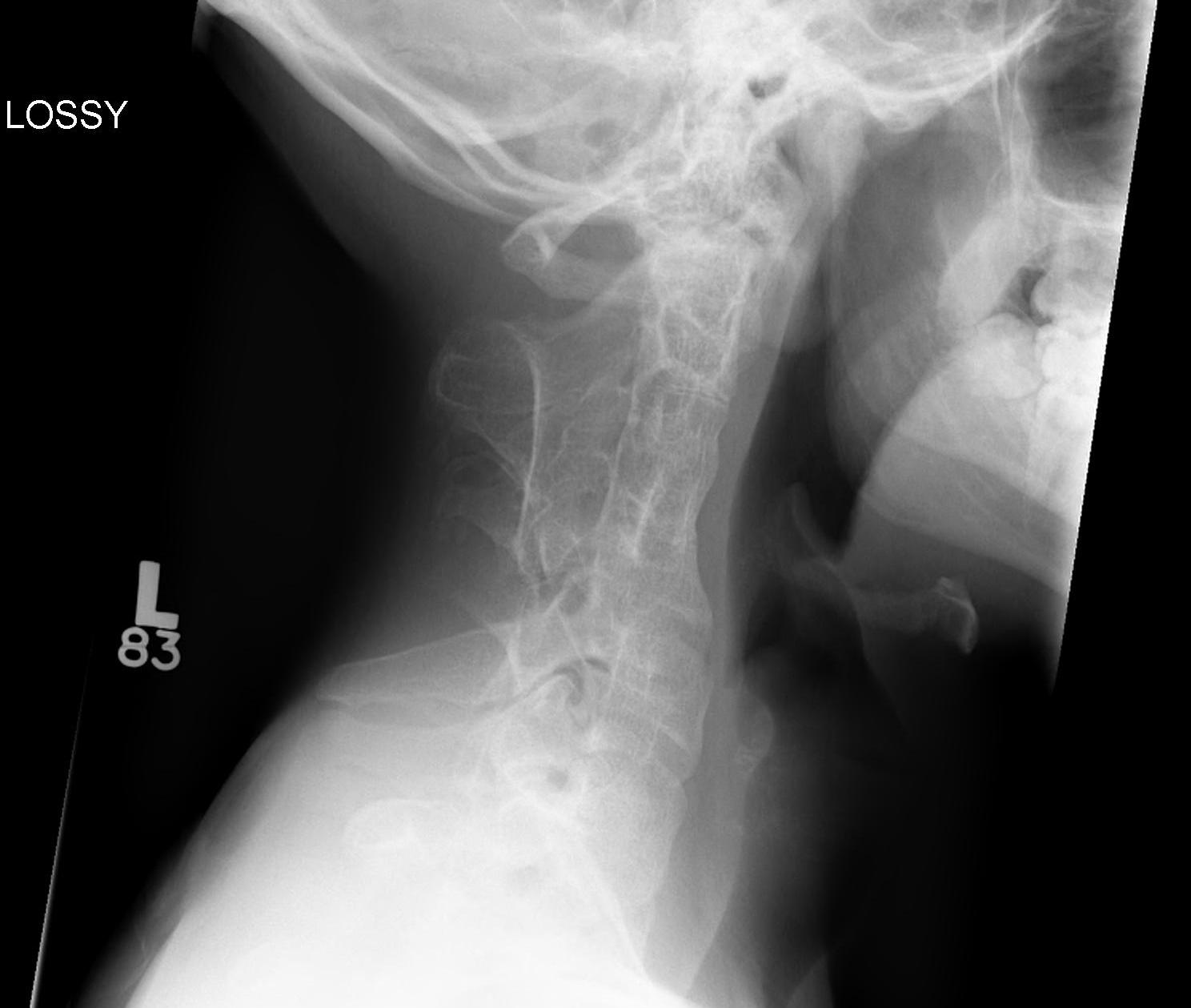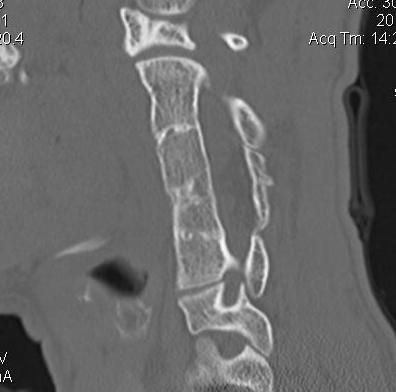Definition
Congenital synostosis of cervical vertebrae
- refers to patients with any element of cervical spine fusion
- ranges from 2 vertebrae to whole spine
Classic triad
1. Short neck
2. Low posterior hairline
3. Stiff neck
Triad present in <50%
Aetiology
Failure of normal segmentation of mesodermal somites of neck
- during 3rd to 8th week
- may be AD inheritance
Clinical
Neck
Stiff especially lateral movements
- usually hypermobile at unaffected levels
Torticollis
Short neck
Head arises from shoulders
Often associated with webbing of neck
Low posterior hairline
- on level with shoulders
Problems
Degenerative OA
- caused by hypermobility of adjacent segments
- leads to instability & degenerative OA
- presents 3rd decade
VECTRAL
- associated abnormalities
Other congenital cervical spine abnormality
- occiptiocervical synostosis
- basilar impression
- odontoid anomalies
Scoliosis
- 60%
- congenital type
- associated respiratory problems
- need to consider neck problems when treating scoliosis
Sprengel's Deformity
- 30%
- same insult that causes KF halts descent of scapulae
Renal
- 35%
- renal failure often occurs early
Deafness
- 30%
- affects development of speech & language
Synkinesia
- 20%
- involve paired movements of hands
- abnormal pyramidal tracts
- usually resolves
Cardiac
- 15%
- various congenital defects
- need preoperative investigations / echo
Xray
Vertebral fusions

Thoracic abnormalities
- scoliosis
- kyphosis
CT scan
Body fusion / block vertebrae
Hemivertebrae
Flattening & widening bodies
Hypoplasic discs
Cervical spina bifida


Management
1. Manage associated conditions
Torticollis
Scoliosis
2. Neck Deformity
Little can be done for neck deformity
Avoid contact sports as sudden death & neurology reported
- worse if small mobile segment adjacent to long fused segment
